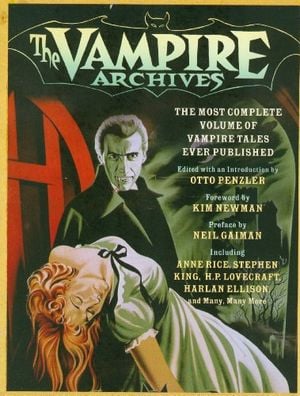Meet the Real-Life Vampires of New England and Abroad
The legend of the blood suckers, and the violence heaped upon their corpses, came out of ignorance of contagious disease
/https://tf-cmsv2-smithsonianmag-media.s3.amazonaws.com/filer/real-life-vampires-of-new-england-and-abroad-631.jpg)
A little more than a century ago, vampires stalked Rhode Island. Or rather, New England farm families were digging up dead relatives suspected of being vampires and desecrating the bodies in a misguided effort to protect the living. Often these latter-day vampire hunters removed and burned their loved ones’ hearts.
Though the corpses were typically re-buried, modern scholars continue to unearth the stories of real-life “vampires,” whose historic tragedies underlie classics like Dracula as well as Hollywood’s latest guilty pleasures.
The practice of disinterring accused vampires likely began in Eastern Europe, spreading to western countries including France and England in the 1700s, and then to rural New England, where vampire panics were common up through the late 1800s – particularly in Rhode Island.
At home and abroad, vampire scares usually began when a person died – often of a contagious disease, and in New England almost always of tuberculosis – and others in the vicinity began dying, too, usually of the same sickness. Ignorant of germs, people surmised that the dead person had come back to drain family members’ blood, and the exhumation and staking, burning, beheading and whatever else followed (practices varied with geography) were an effort to insulate the community against further harm. Often the vampire-hunters were not disappointed when they pried open the graves: many natural signs of decay, like bloating and bleeding from various orifices, looked like evidence of midnight feasts.
Here are a few “vampires” from America and elsewhere, the real lives behind our modern legends.
Peter Plogojowitz: This Serbian villager and accused bloodsucker was exhumed and staked through the heart a few weeks after his death in 1725. In his book, “Vampires, Burial, and Death,” folklorist Paul Barber treats Plogojowitz as the quintessential European vampire, because his exhumation closely follows the broader pattern of the superstition. Plogojowitz was the first in his village to die of a sickness, and subsequent local deaths were blamed on his late-night predations. A rather gruesome-sounding autopsy revealed what were considered the tell-tale signs of vampirism:
“I did not detect the slightest odor that is otherwise characteristic of the dead, and the body…was completely fresh,” one witness wrote. “The hair and beard… had grown on him; the old skin, which was somewhat whitish, had peeled away, and a new fresh one had emerged under it … Not without astonishment, I saw some fresh blood in his mouth.”
Arnold Paole: In the early 18th century, this rural Serbian broke his neck after a fall from a hay wagon. Like many others before him, he was accused of posthumous vampirism and exhumed after a series of deaths in his village; many of his supposed victims were dug up as well. Austrian military authorities in control of the region investigated the deaths, and their published account was widely circulated. Paole’s case is thus credited with spreading the vampire superstition to Western Europe, where it took hold before reaching the New World.
Nellie Vaughn: Just 19 years old, she was buried in 1889 in West Greenwich, Rhode Island. Today this so-called vampire is almost as famous as Mercy Brown, whose exhumation was covered by international newspapers. Vaughn’s cemetery has frequently been visited, vandalized and her headstone broken. But in his book, “Food for the Dead,” folklorist and vampire scholar Michael Bell presents evidence suggesting that Vaughn’s is a case of mistaken identity, and that her contemporaries never accused or exhumed her. The superstition probably arose in the last half century or so, and may be a result of confusion with Mercy (who died nearby at a similar date and age) and the admittedly creepy epitaph on Vaughn’s tombstone: “I Am Waiting and Watching For You.”
Frederick Ransom: A Dartmouth College student from a well-respected family in South Woodstock, Vermont, he died of tuberculosis in 1817 and is an example of an educated person ensnared in a vampire panic usually associated with misinformed farmers. Ransom’s father had his body exhumed in the hopes of saving the rest of his family: his heart was burned in a blacksmith’s forge. “However, it did not prove a remedy, for mother, sister, and two brothers died afterward,” Ransom’s surviving brother Daniel later wrote. “It has been related to me that there was a tendency in our family to consumption, and that I…would die with it before I was thirty.” Happily, when Daniel Ransom wrote these words he was more than 80 years old.
Bristoe Congdon’s child: A “black” man named Bristoe Congdon and several of his children died of tuberculosis in Rhode Island in the 1800s. “The body of one of the children was exhumed,” one source wrote, “and the vital parts were burned in obedience to the dicta of this shallow and disgusting superstition.” Though it’s not entirely clear whether Congdon was African-American or American Indian, the case was the first that folklorist Michael Bell has found suggesting that the vampire tradition crossed racial lines.
Annie Dennett: She died of consumption at the age of 21 in rural New Hampshire. In September of 1810, a traveling Freewill Baptist Minister from Vermont named Enoch Hayes Place attended her exhumation, which her family undertook in an effort to save Annie’s father, also sick from tuberculosis. Place’s diary entry is a curious example of the participation of a respected New England minister in a vampire hunt. “They opened the grave and it was a Solemn Sight indeed,” Place wrote. “A young Brother by the name of Adams examined the mouldy Specticle, but found nothing as they Supposed they Should…. There was but a little left except bones.”
Related Books

The Vampire Archives: The Most Complete Volume of Vampire Tales Ever Published